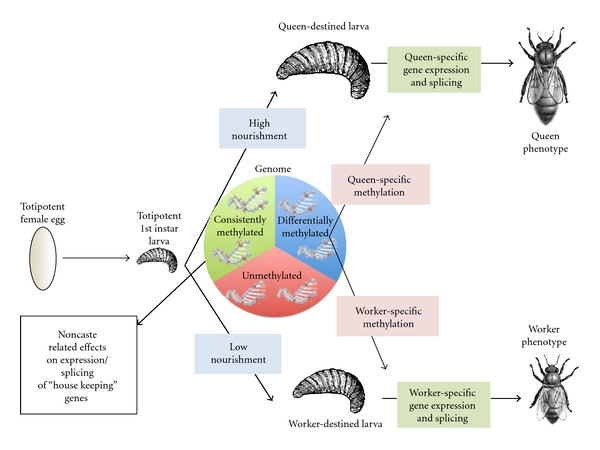Figure 2.

Schematic diagram describing the role of DNA methylation in caste determination in honey bees. Each female egg begins in a totipotent state, which lasts through early larval instars, that can potentially develop into either a queen or worker. Differential nourishment, in the form of royal jelly in the case of queens and lower-quality/quantity food in the case of workers, differentially affects the genomes of queen-and worker-destined larvae. The genome can be roughly divided into unmethylated DNA, consistently methylated DNA, and differentially methylated DNA. Differential methylation can potentially affect the downstream levels of expression and splicing patterns of many genes related to growth, metabolism, and development, leading to alternative queen and worker phenotypes.
